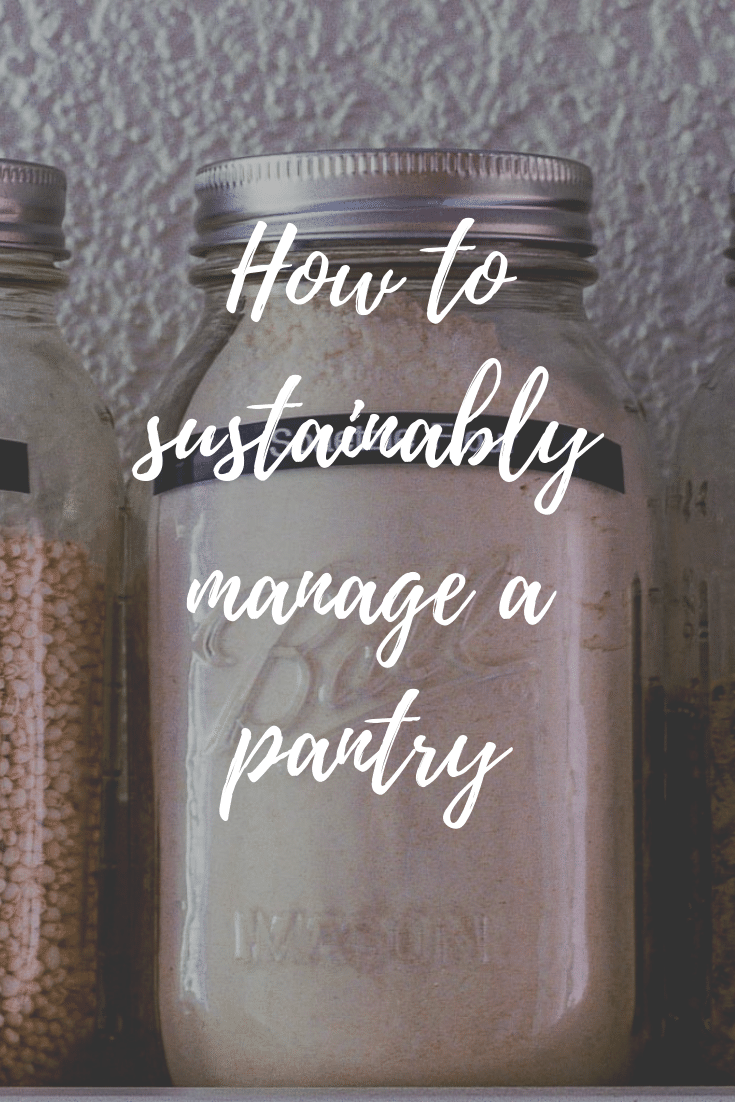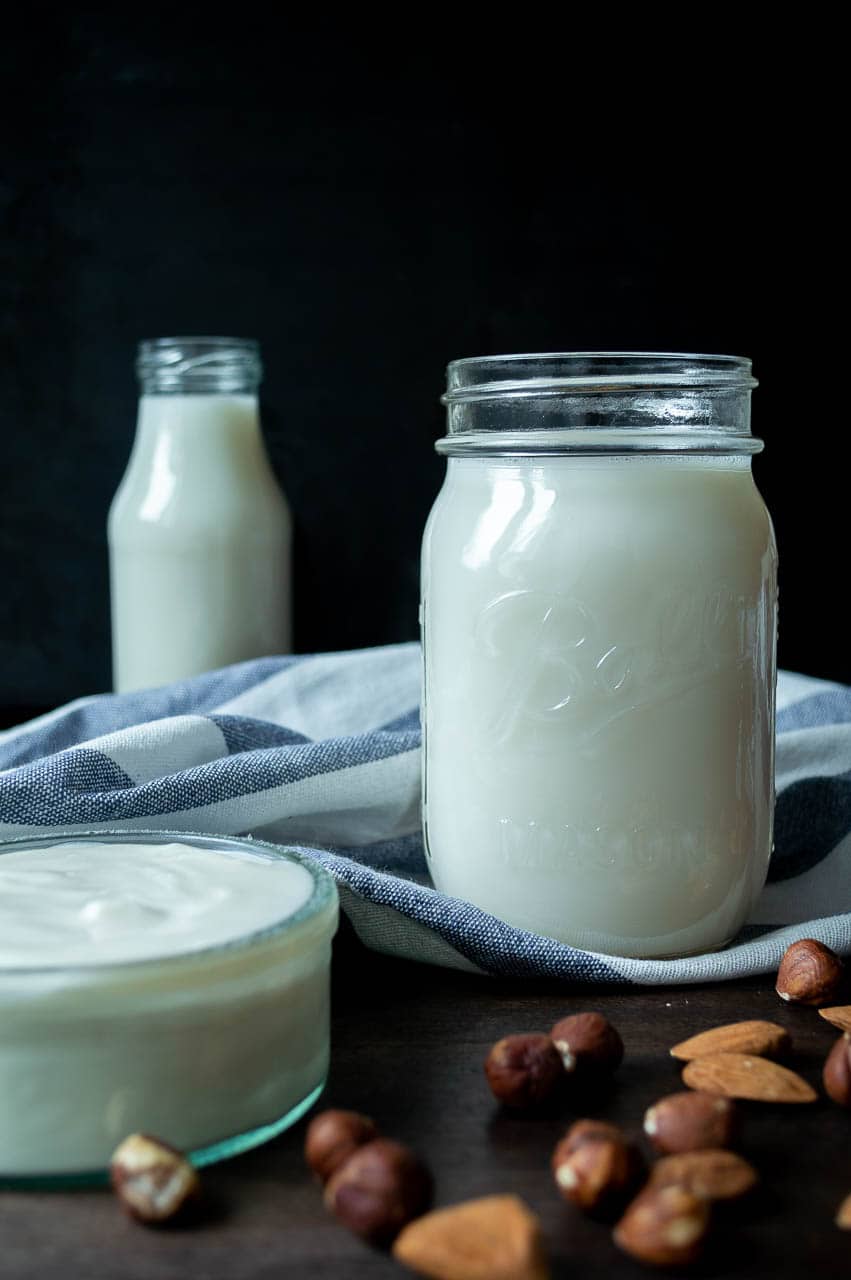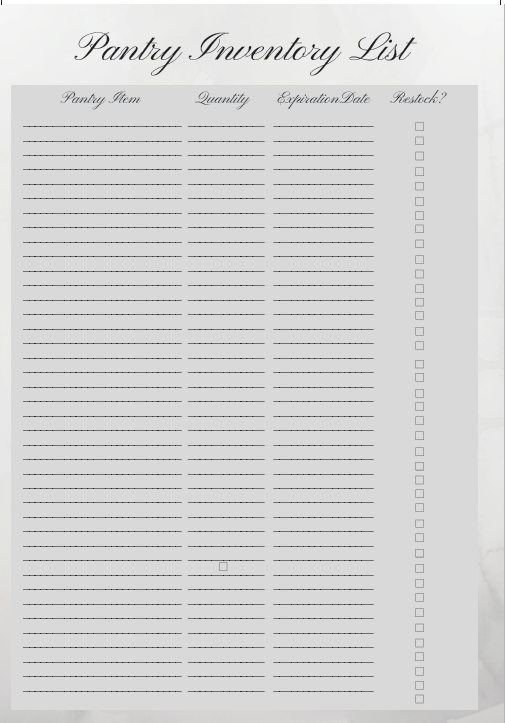This blog post is also available in German.
We now come to the last part of our pantry series. It’s all about how to sustainably manage your pantry. Do you tend to lose track of what food you still have in stock? Do you therefore often buy something twice? Or maybe you would like to buy more unpacked, but are overwhelmed by what you really need to buy when you are in the bulk store?
Lot of it is connected to a non-existent or unclear management of your stock. Today I’ll tell you how you can get this under control and how you can sustainably manage your pantry so that the above-mentioned problems no longer occur. If you have not yet created a pantry system, then start at the beginning of this series.
What does sustainable mean in terms of a pantry?
Let’s first clarify what sustainable means in relation to a pantry. Your pantry is sustainable if:
- Plastic-free containers made of reusable material (glass).
- No more food waste is produced due to double purchases or forgotten food that expires.
- Consciously only purchases what goes out, i.e. what is needed.
- No more packaging waste, as the food is purchased unpacked.
For these points to work, you need to organize and manage your stocks properly. I`ll explain how this works in the following sections. At the end of this article, you can download a fact sheet summarizing most important points of this blog post. Like that you always have the most important information on how to sustainably manage a pantry in reach, even if offline.
Regarding the above points, two more remarks. If you own plastic containers still perfect for storage, you can of course also use those. You don’t throw away functional ones, this wouldn`t be sustainable. However, I would avoid new plastic purchases.
Second, don’t put too much pressure on yourself in terms of unpacked shopping! The fact is that you may not find everything you need in bulk stores. Of course you make certain things yourself, but not everyone has the time to do so. So don’t stress yourself too much, otherwise shopping unpacked won’t be fun anymore. Just try to buy whatever you can. Otherwise you buy it packed if you can`t relinquish.
How to sustainably manage your pantry
Let’s get to the actual topic, namely how to sustainably manage your pantry. If you actively implement the following points, then sustainable pantry management will be an absolute success for you. I`ve been using this strategy for a while now and it helps me to keep an enormous overview and to sustainably manage my pantry.
1. Keep it neatly arranged
Ideally, you want to see at a glance what you still have in stock. If containers are in several rows and stacked on top of each other, it quickly becomes confusing. It will be difficult for you to sustinably manage your pantry, as you run the risk of certain food items being forgotten in the back of the cupboard and turning bad. Therefore it`s best if you only align your containers in single rows.
Of course, this is only possible if you have enough space. In my case, this only works with my shelf. In my kitchen cupboards everything is stacked next to and on top of each other. Due to the lack of space, this cannot be avoided. Is this also the case with you? Do you also have space problems? Not optimal, but also not dramatic, as long as you stick to argument 2 and 3 meticulously.
2. Label your containers
Imagine the following scenario; you are baking fresh bread and want to use spelt flour. You open your larder and stand in front of three containers, which somehow contain all powders that could be flour in terms of consistency. But which one is the spelt flour, which is the rice flour and which is the regular wheat flour? Does this situation sound familiar to you?
I want to be completely honest with you. At the beginning of my pantry days this was continously happening to me. I was inconsistent, only put labels on some of the containers, if at all, or didn`t pour the right ingredients in the labelled jars. The result was chaos and even worse, uncertainty about my recipes – fatal for a food blogger – as I wasn`t no longer sure which kind of sugar or flour I had just used.
That’s why I really recommend you to label your containers. You’ll have to invest some time, but once done, it’ll last forever. And if you work with your list of must-have foods, it’s done quicker. There are no limits to your creativity when it comes to labelling. Personally, I use a labeler (I bought it myself), because I find this type of label very durable and of good quality. However, the labels themselves cause waste, not optimal, but ideally you only need to label the containers once.
3. Keep an inventory
First of all, it may seem that an inventory list is mainly associated with effort. But that’s not the case, once the list stands, it won`t take you much time to keep it. Furthermore, it makes the management of your stockkeeping, as well as your purchase in the bulk store, much easier. You ask yourself how to do that? How do you make an inventory list that helps you to sustainably manage your pantry?
Quite simple, with such a list you have an inventory of your pantry at a glance. You can immediately see which foods will soon run out, which ones you should use up, because they will soon expire and what else you still have enough of. Effective, time- and cost-saving, as well as clearly arranged. With the help of your inventory list you can put together your shopping list in no time at all and know exactly what you`ll need from the bulk store. Sounds wonderful, doesn’t it? But the whole thing has a little catch. An inventory list is only as good as the person who keeps it. In other words, you have to keep your list very consistent. And here`s how it works.
- At the beginning you have to plan some spare time, go through your supplies and write down everything on your list. Try to note an expiration date whenever possible. If this is no longer possible, do it the next time you fill up the jar.
- Once the list is complete, all you have to do is mark the foods that are about to run out. It is best to do this during the cooking process.
- Once a week you take a look at your list. You`ll use up the foods that are about to expire in the coming week. The marked goods directly wander onto your shopping list.
With this procedure you always know immediately what you should replace. This will prepare you for the bulk store and allow you to take enough containers and bags with you for shopping. It is best to place the inventory list in your kitchen. I have adhesive folders on the inside door of my kitchen cupboard for the inventory list and on the fridge for my menu plan.
To make it easier for you to start inventorying, you can download my free inventory list. The list allows you to note expiration dates and to tick what you need to replace soon.
4. Note expiration dates
The importance of this point has already been mentioned under three. If you note down your expiration dates, you`ll always see immediately which supplies you should use up before they become bad. This is an important aspect if you want to sustainably manage your pantry. After all, you don’t want to throw anything away! What expires soon you`ll cook the following week. If you don’t know the expiration dates, note down the date you filled up your container. This will at least show you how long it has been standing on your shelf.
5. plan your dishes in advance
Menu planning not only helps to prevent food waste, but also to sustainably manage your pantry. You can plan meals with food that has been around for a long time or is about to expire. Like that no more food will end up in the trash! Menu planning also helps you to know in advance which foods you`ll soon run out of and you have to replace. Meaning you’ll also prevent nasty surprises and unnecessary extra visits to the bulk store. Because if you plan your dishes ahead, then you know which ingredients you still have to get and which you already have in stock.
6. shopping unpacked
If you manage your pantry the way recommended above, you can plan your visits to the bulk store in advance and you`ll always know what supplies you need from there. Like that you most certainly can find a date which works for you to go bulk shopping. If it`s not possible for you to go there in the foreseeable future, then you plan dishes with ingredients that you still have at home. If you have to replace ingredients that you buy unpacked, you`ll know early enough – thanks to the above strategy – when they will run out and when it’s time to go shopping again in the bulk store.
That would have brought us to the end of this pantry blog series. I hope the shared tips, advices and strategies will help you build your own sustainable storeroom and support you to sustainably manage your pantry.
Read you soon
Sarah





